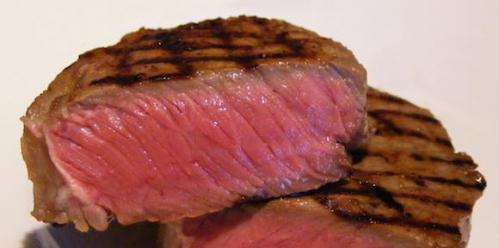A new study into meat tenderness could refine the way Australians cook steak.
Meat Scientist Professor Robyn Warner from the Department of Agriculture and Food Systems and her collaborators conducted studies of what happens to meat cells under a microscope whilst it was being cooked.
"We know meat shrinks when it's cooked but we saw something surprising; meat shrinks not just once but twice and we have captured it in video," Professor Warner said. "Our observation is two separate meat proteins must change shape during the cooking process, one at about 55-60 degree Celsius and another at about 75."
"Our study also showed it's the water inside the meat cells that drives the change in texture during the cooking process," she said.
Researchers previously thought it was the white strands (the connective tissue) that influenced meat cell shrinkage during cooking but it appears to be proteins inside the cell that are shrinking and driving water out of the cells.
The aim of the study, published in Meat Science, was to understand the basis for how meat tenderness varies between muscle types and animals. The result will play a role in informing industry meat standards.
"By having a better understanding of these changes that occur during cooking, we hope to take ordinary muscle and treat it in some way or use the best cooking procedure to actually improve its quality and make it a better tasting meat."
More information: J.M. Hughes, S.K. Oiseth, P.P. Purslow, R.D. Warner, "A structural approach to understanding the interactions between colour, water-holding capacity and tenderness," Meat Science, Volume 98, Issue 3, November 2014, Pages 520-532, ISSN 0309-1740, dx.doi.org/10.1016/j.meatsci.2014.05.022.
Provided by University of Melbourne




















